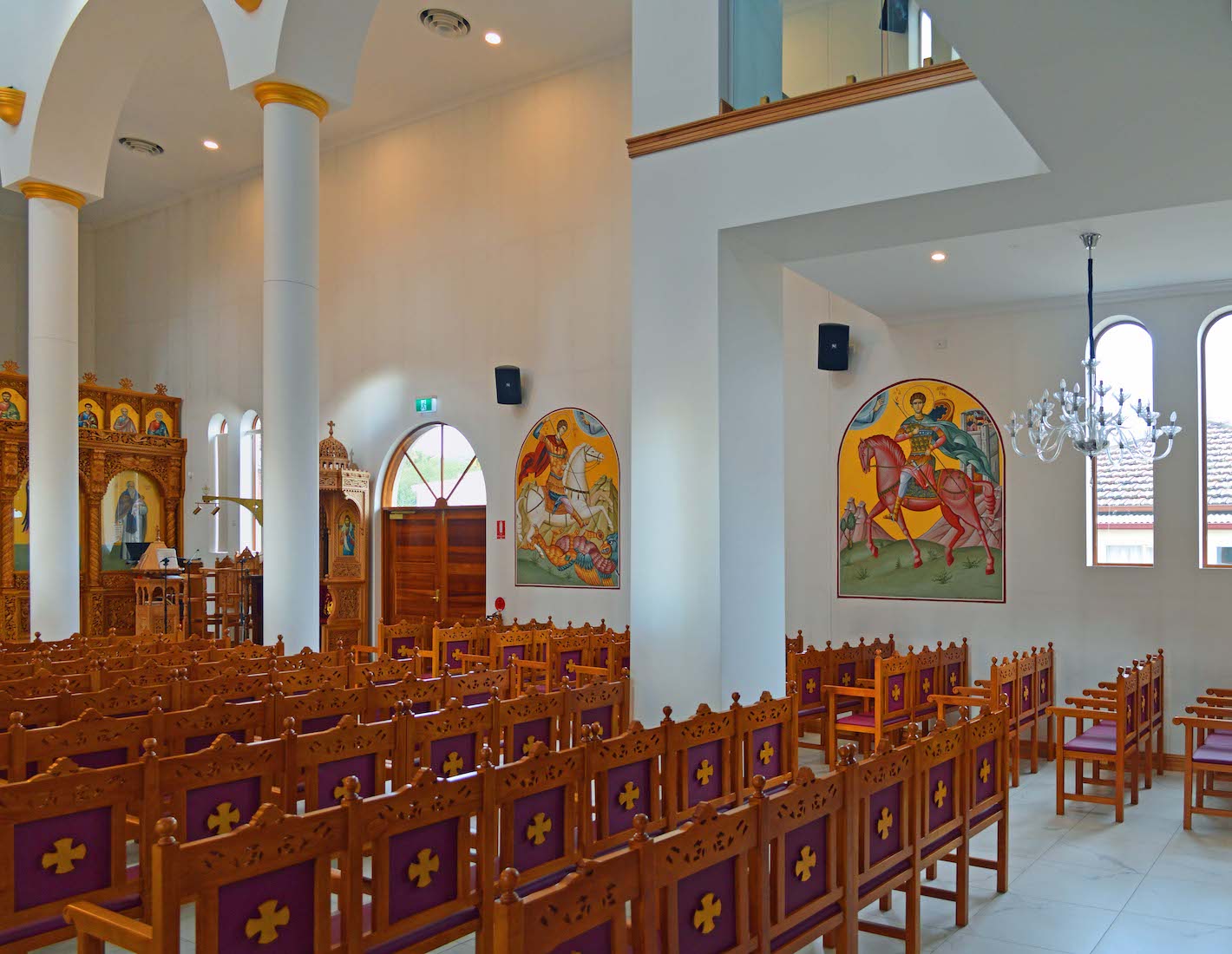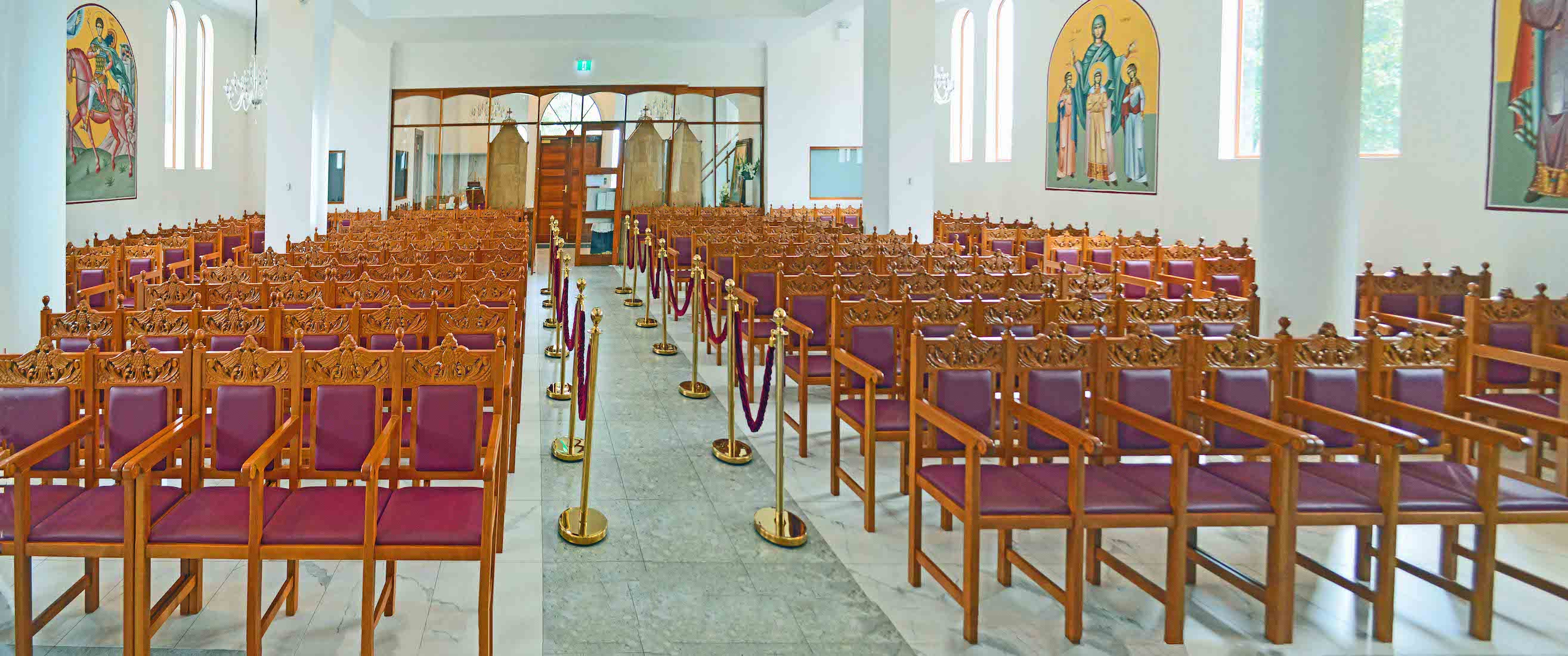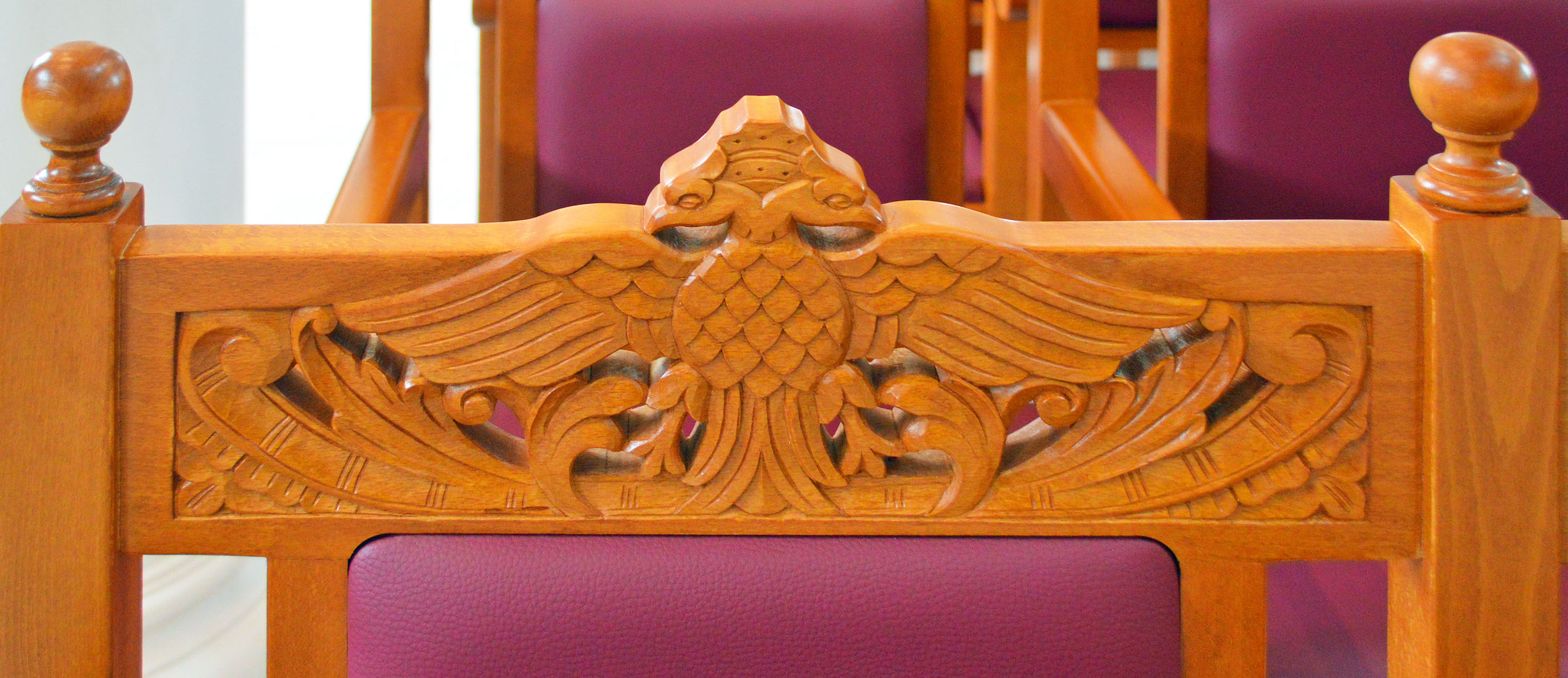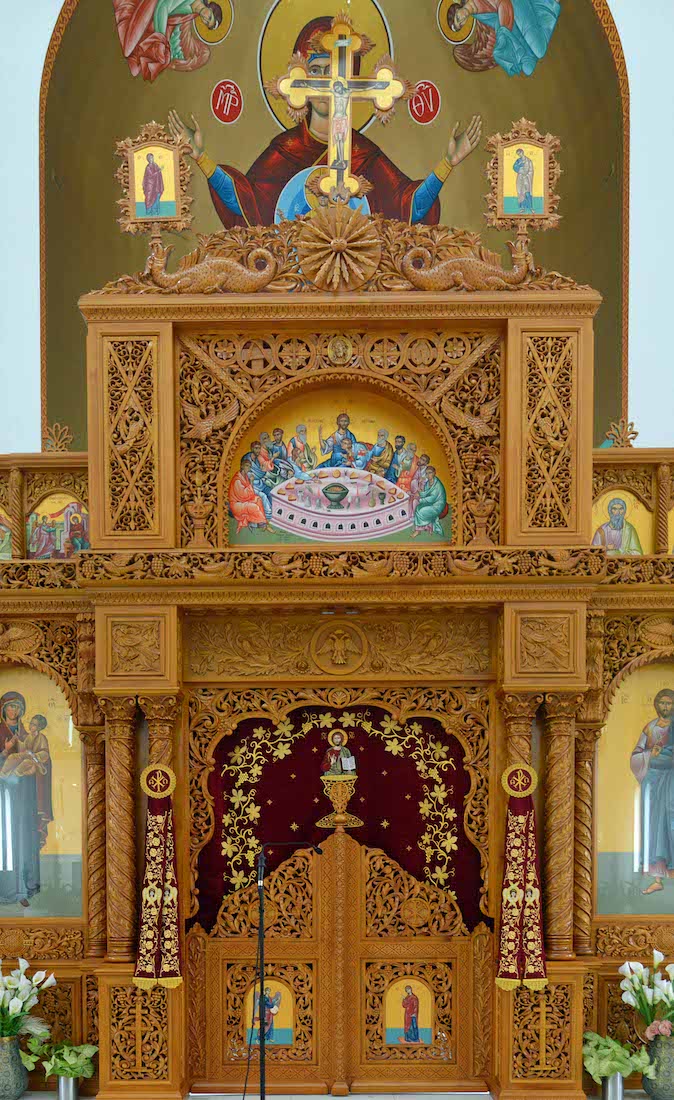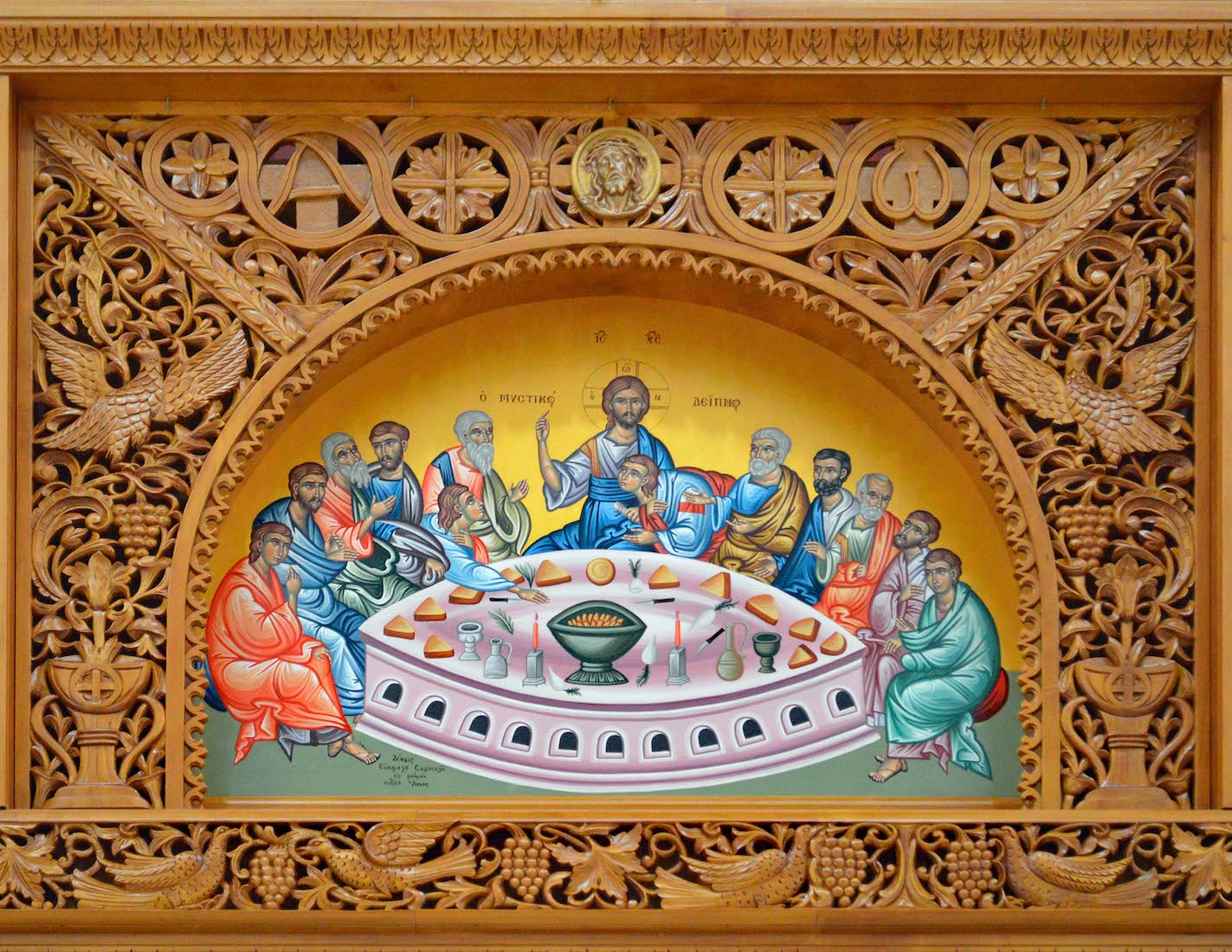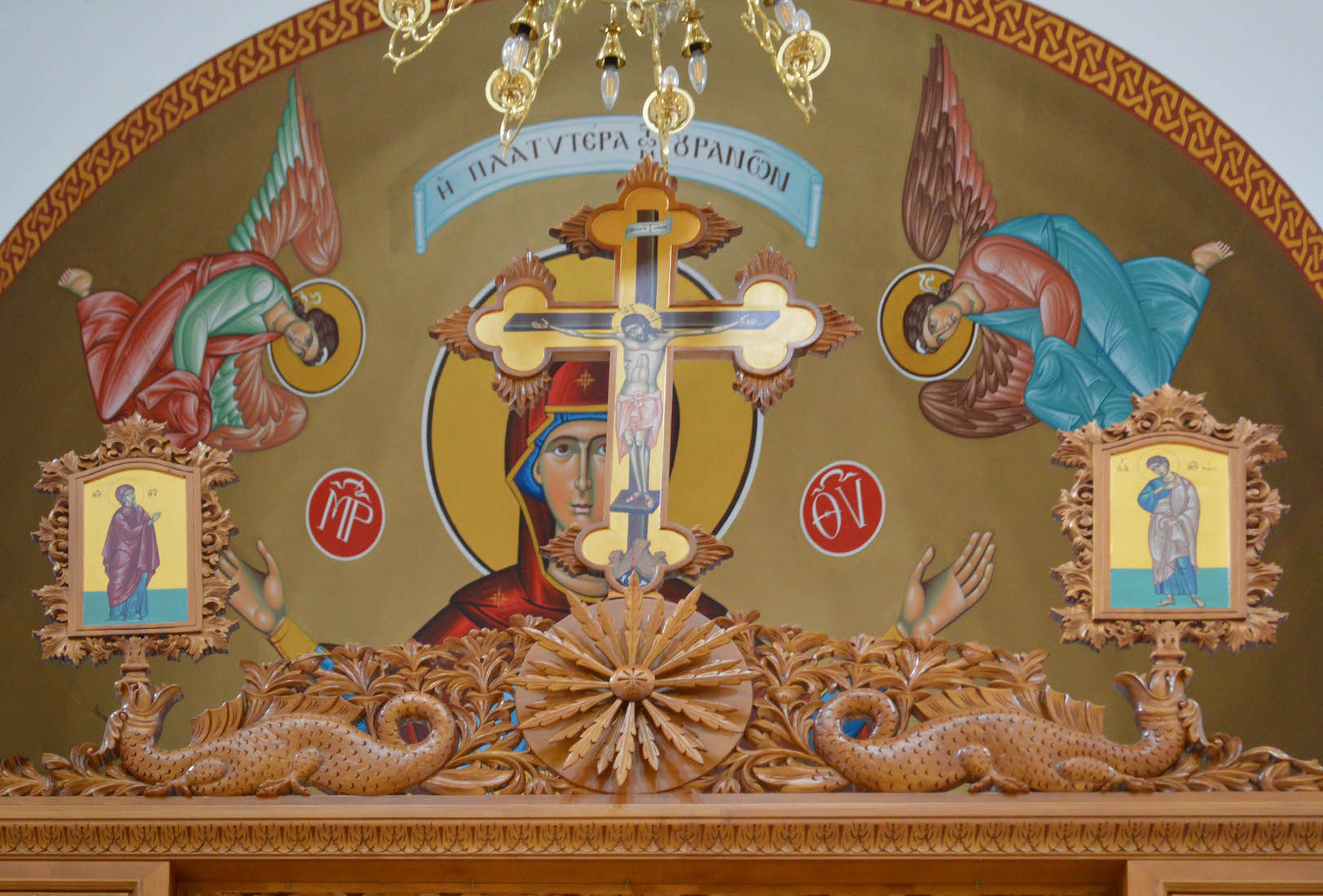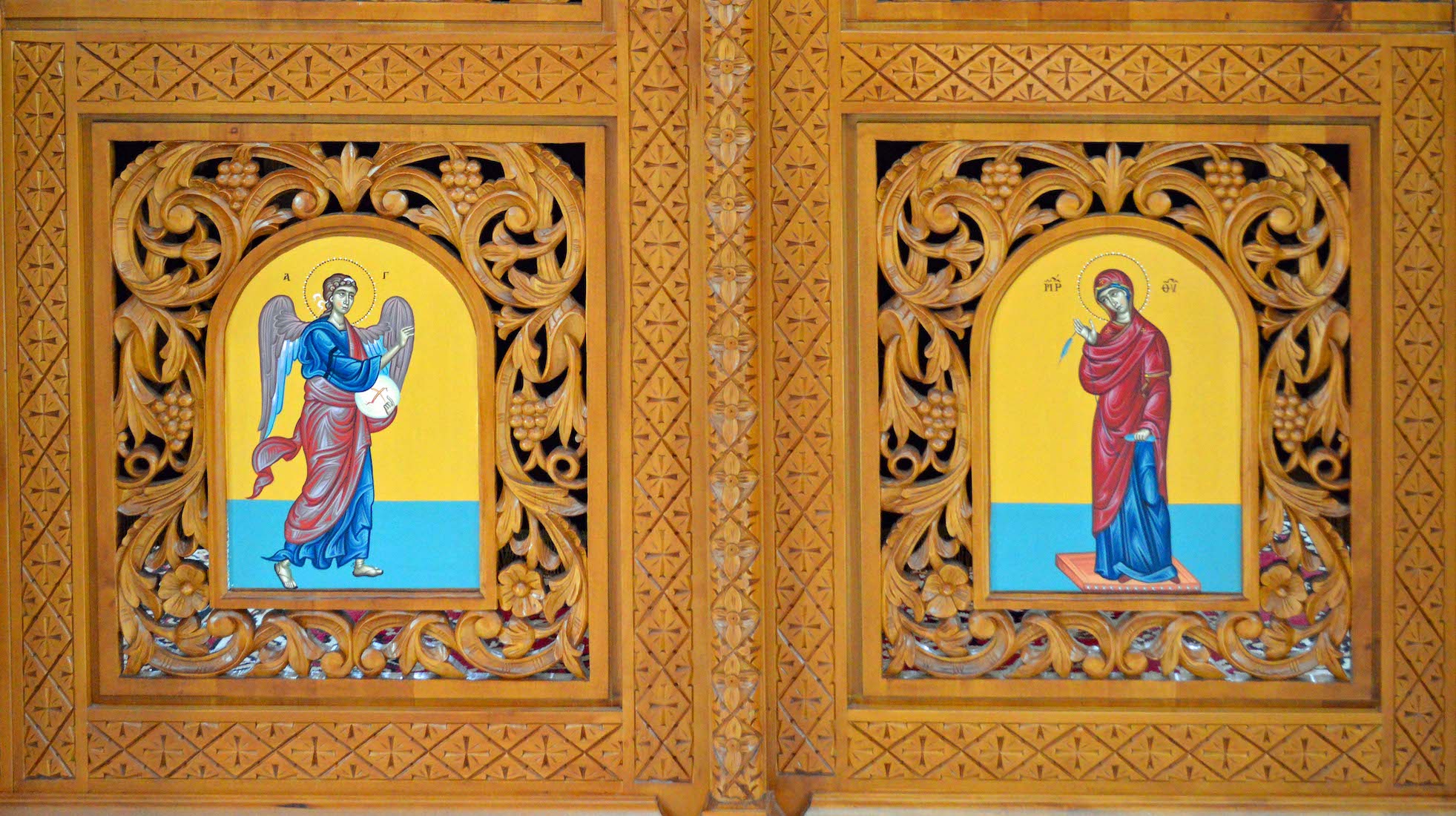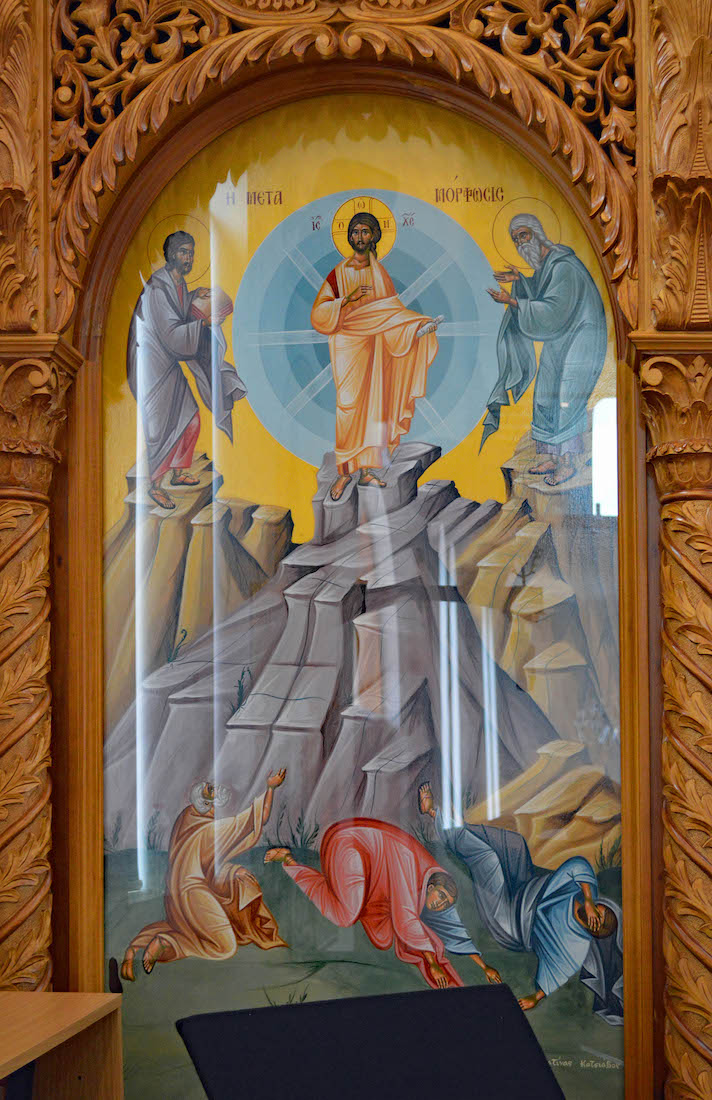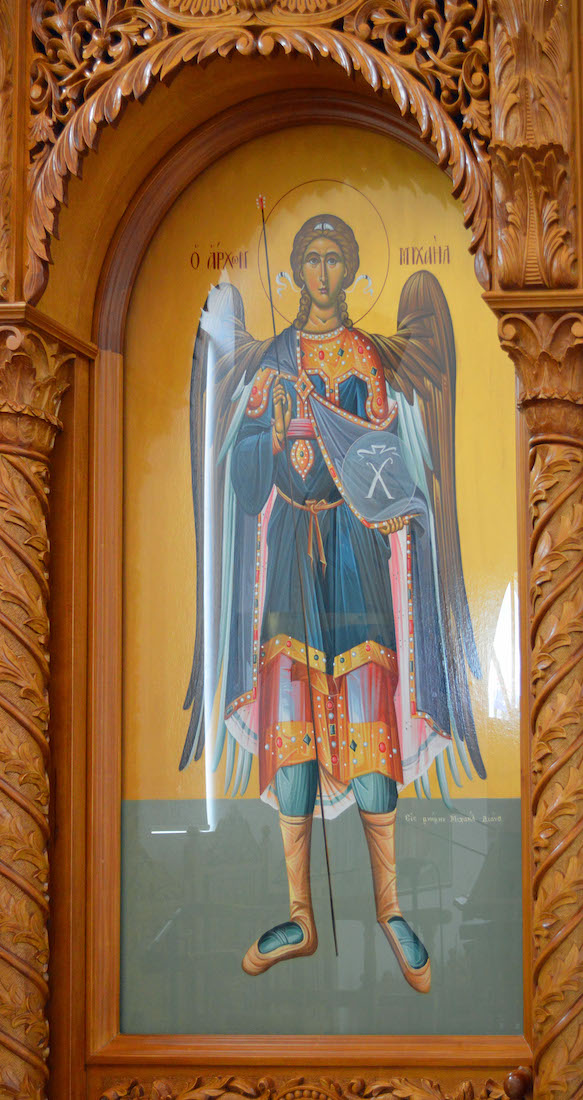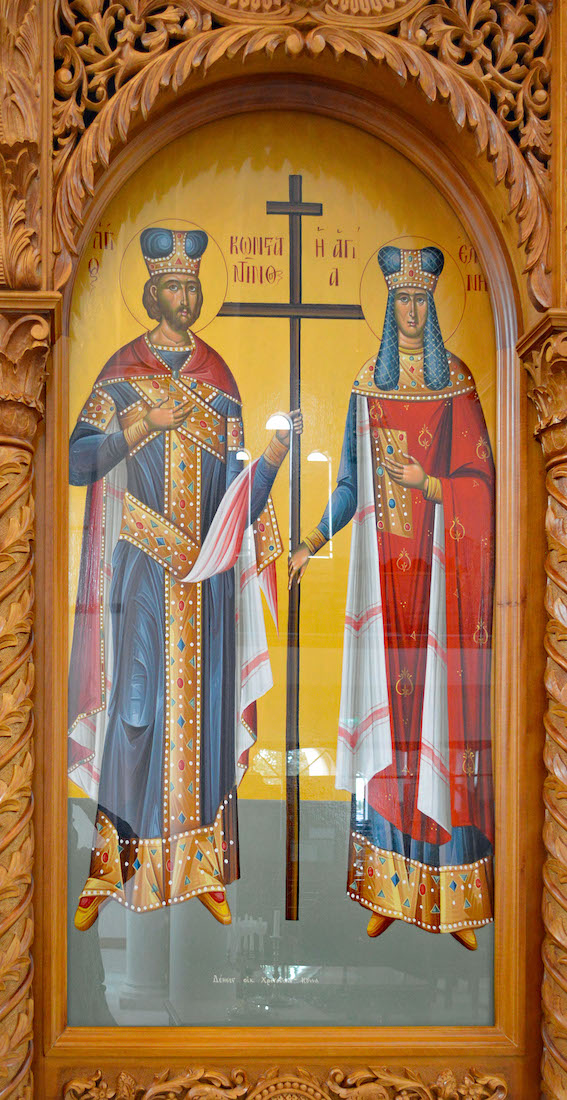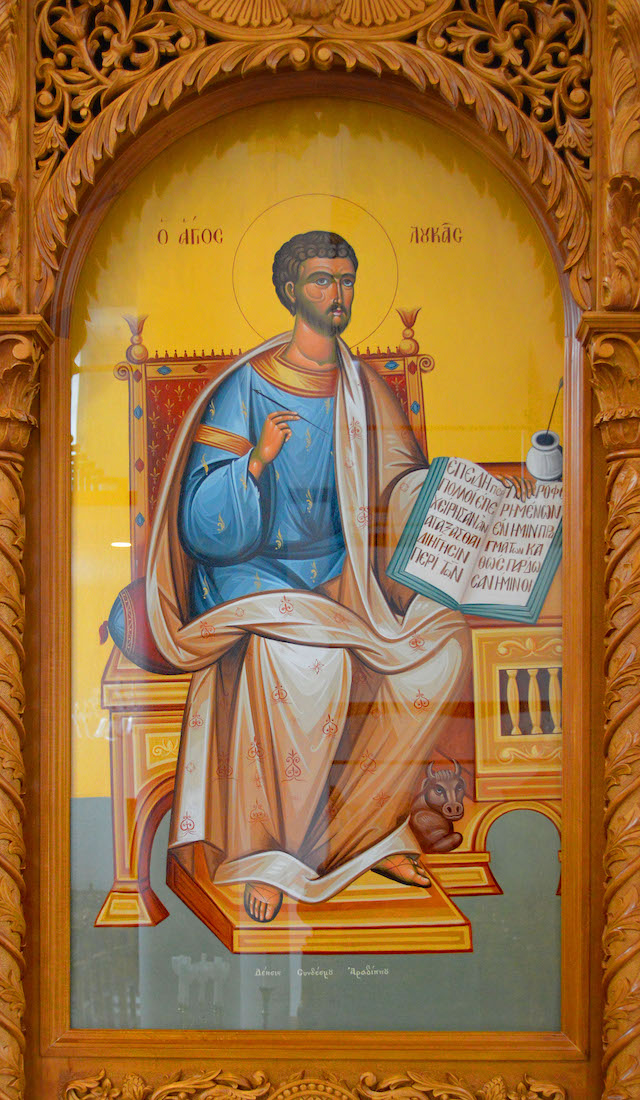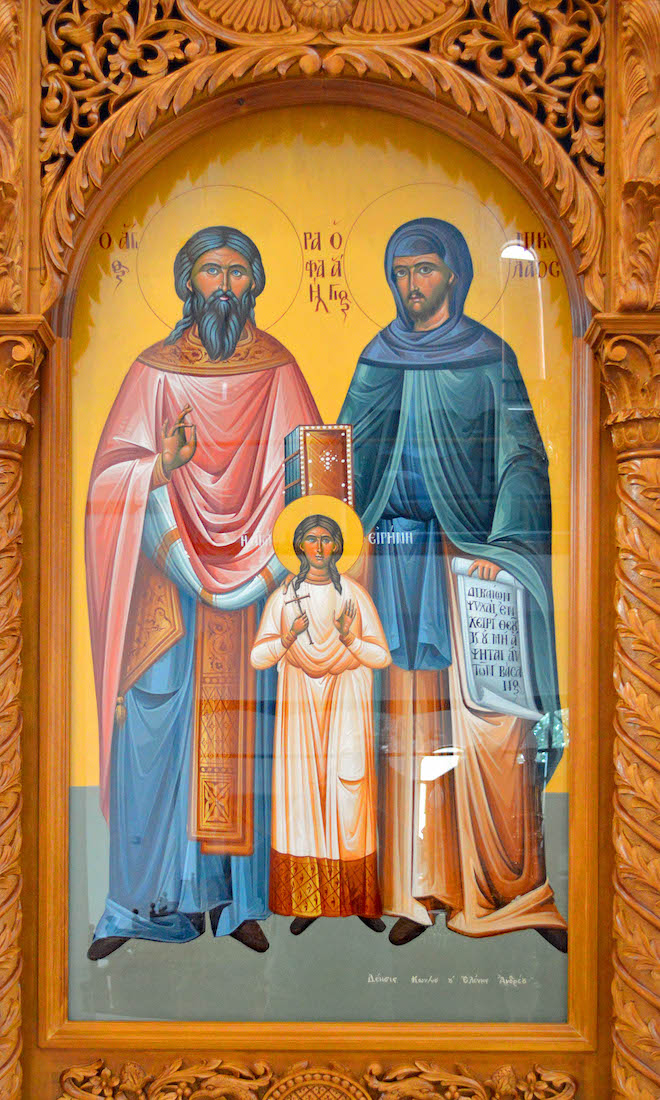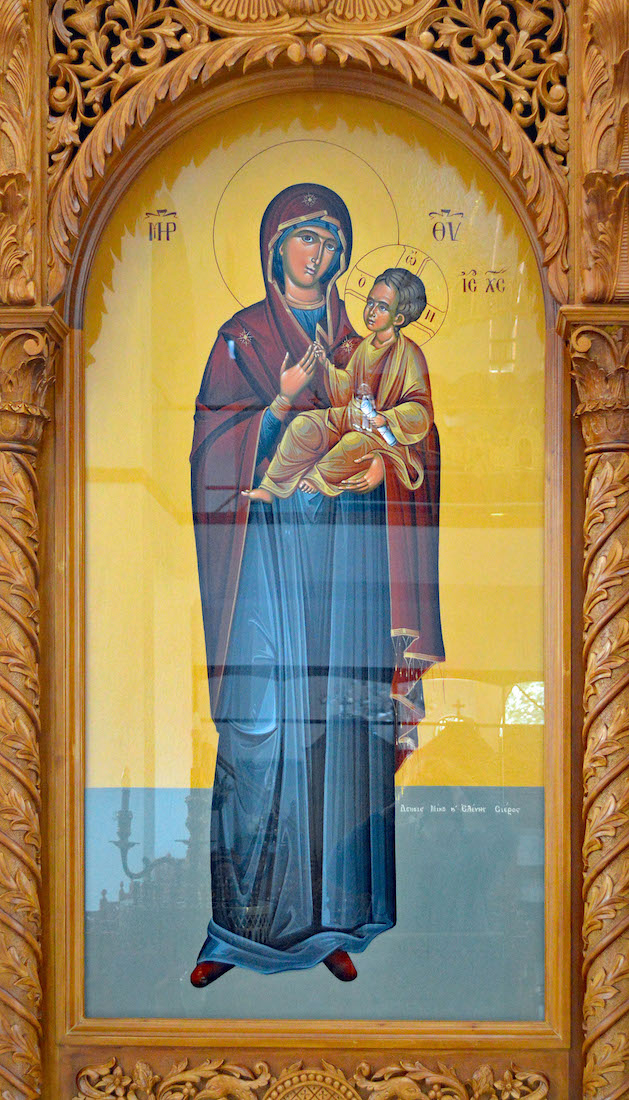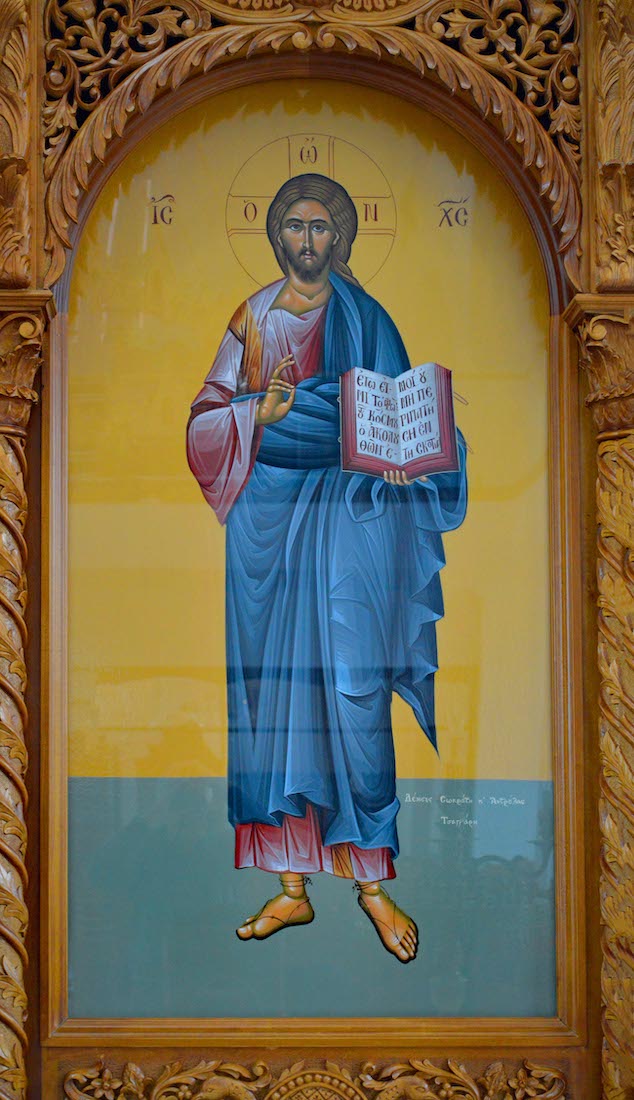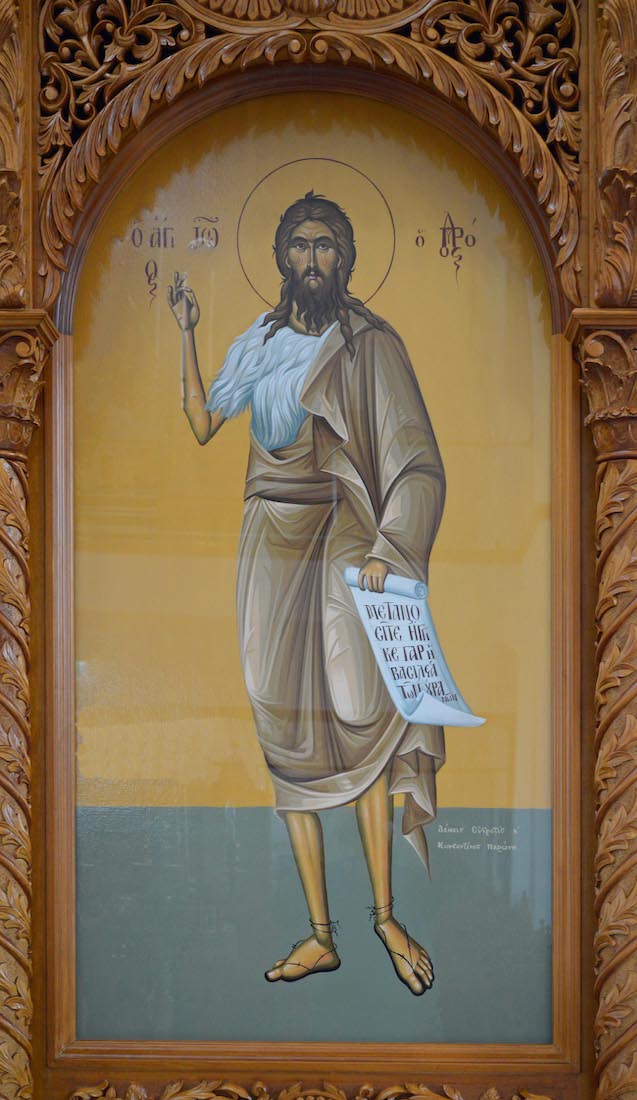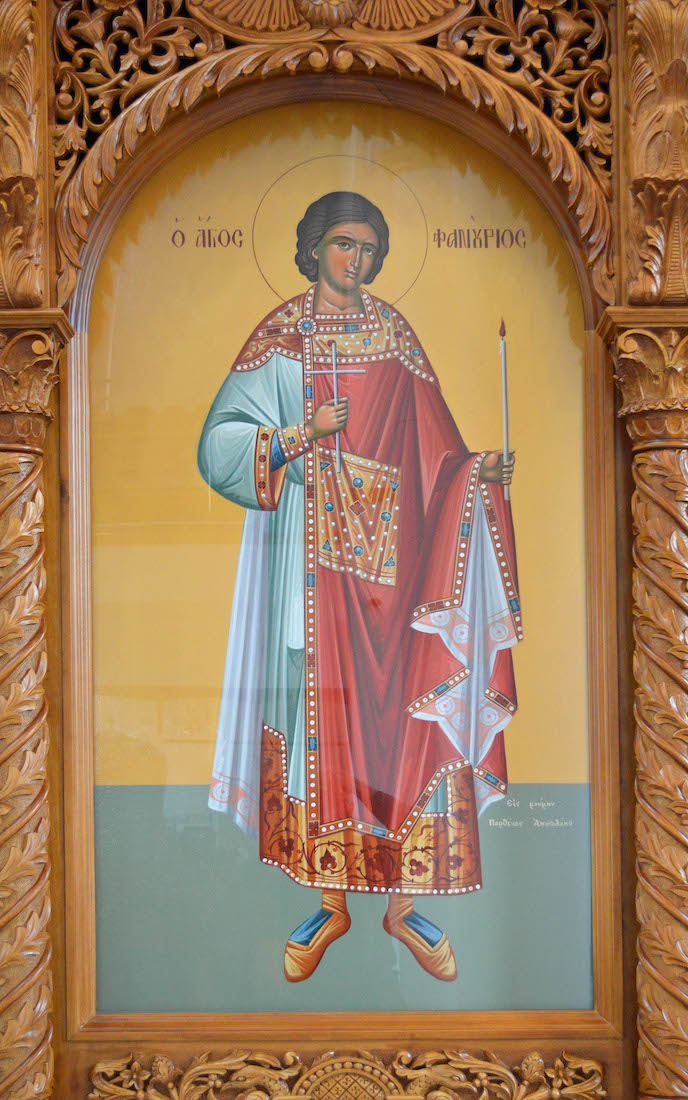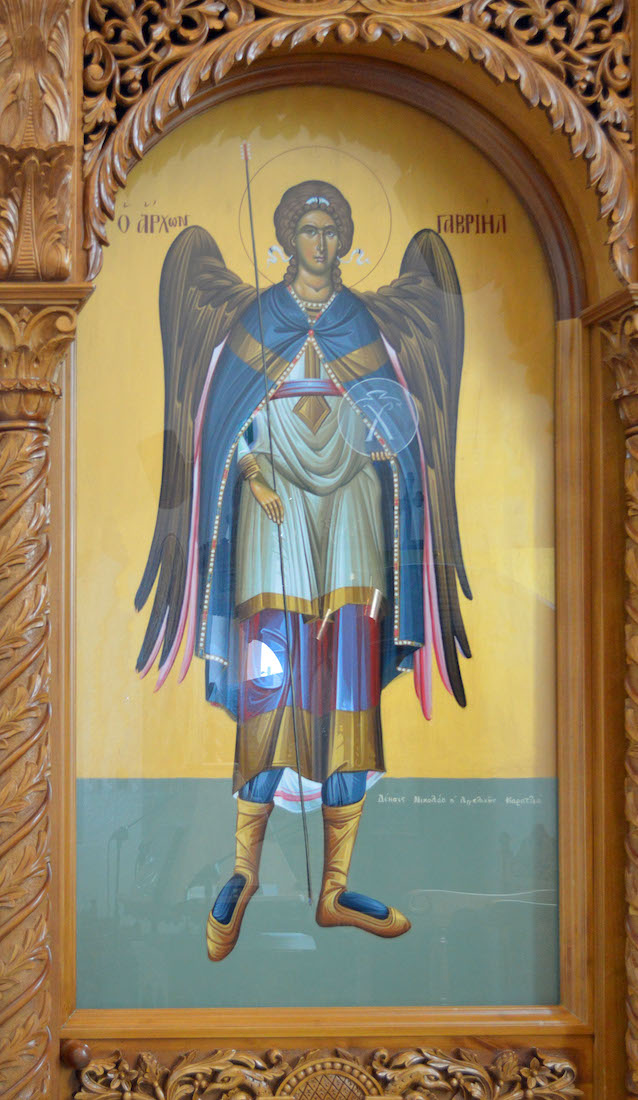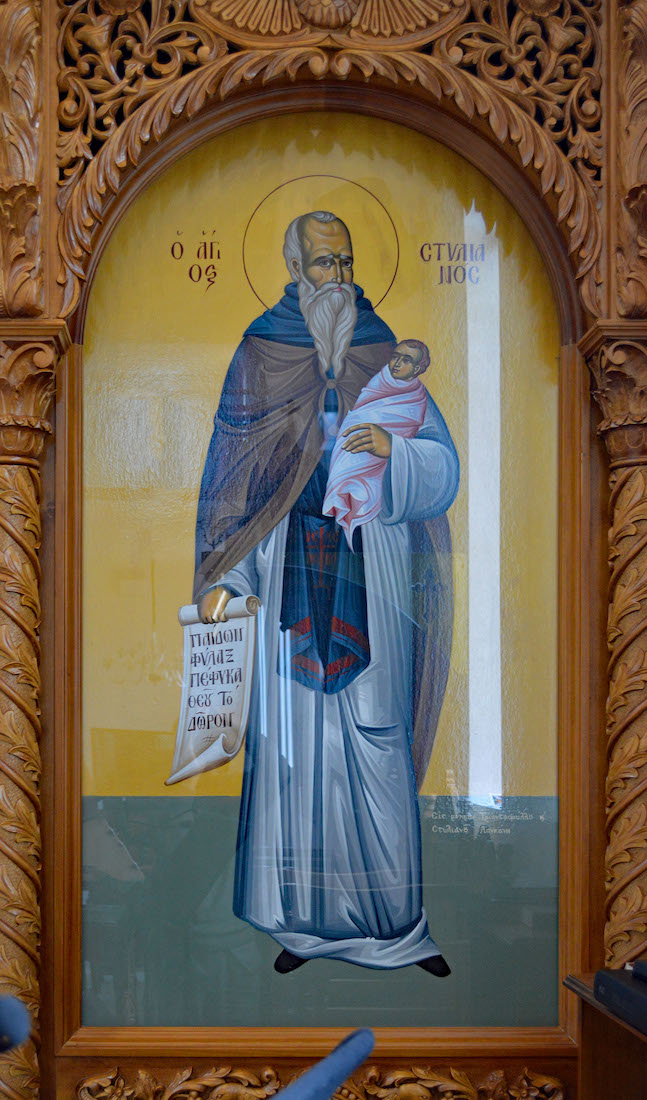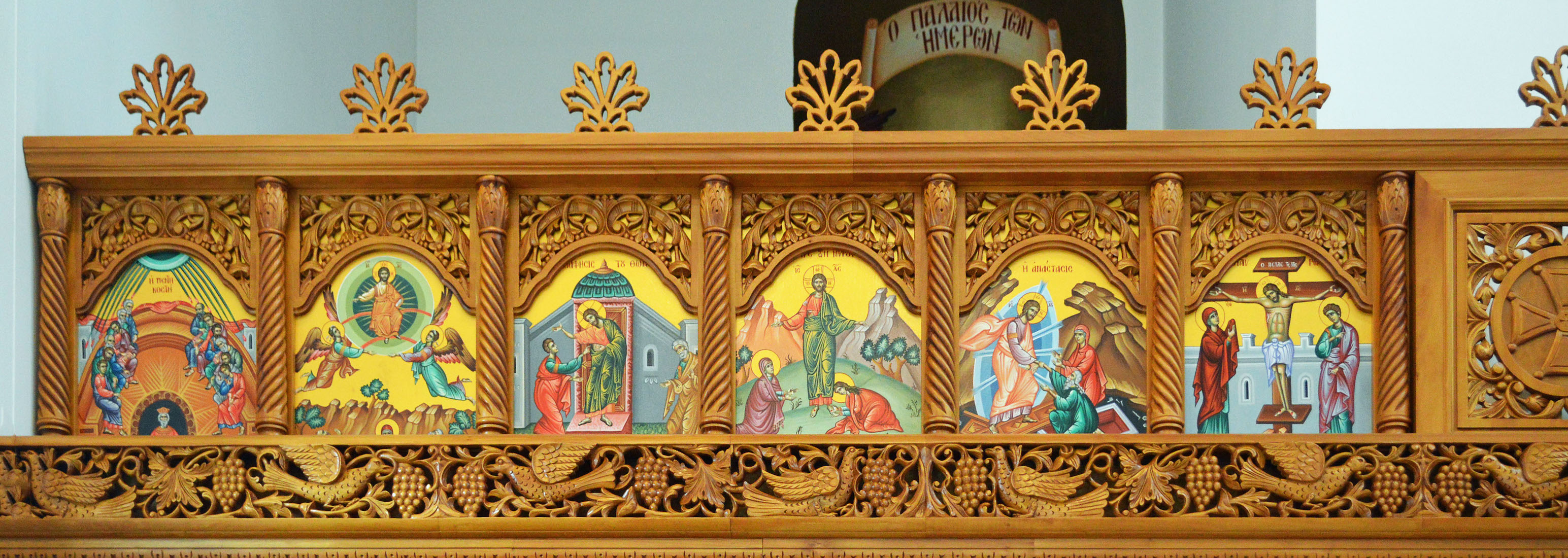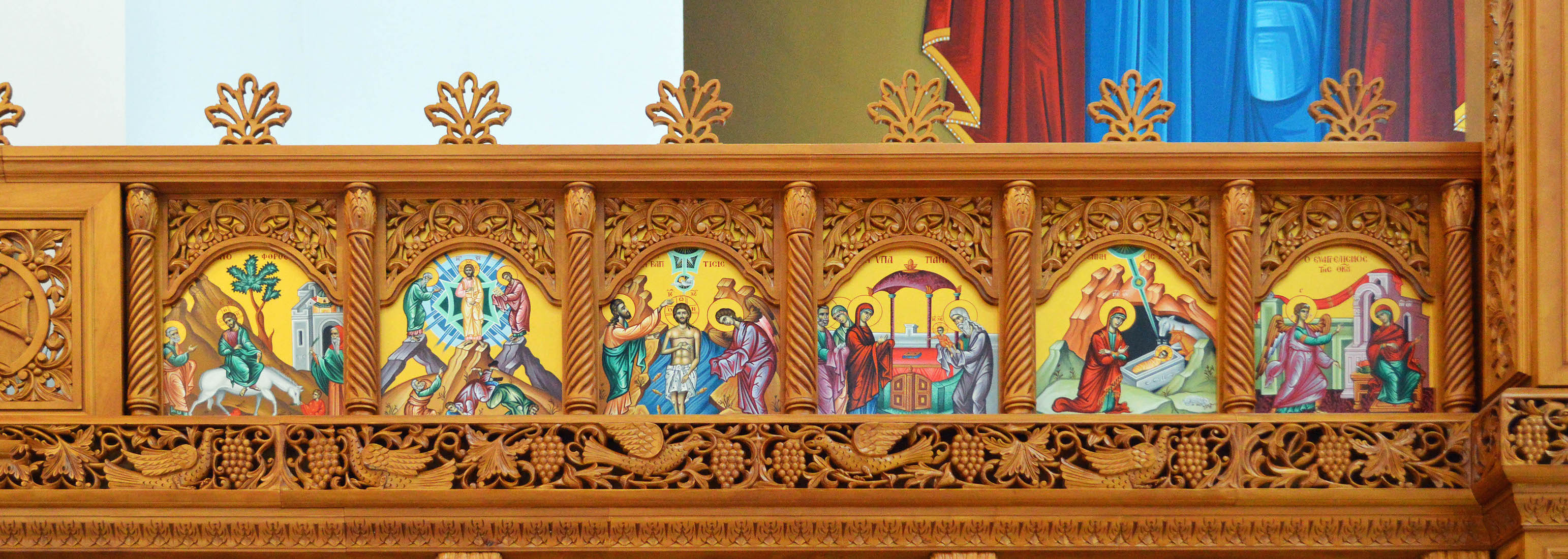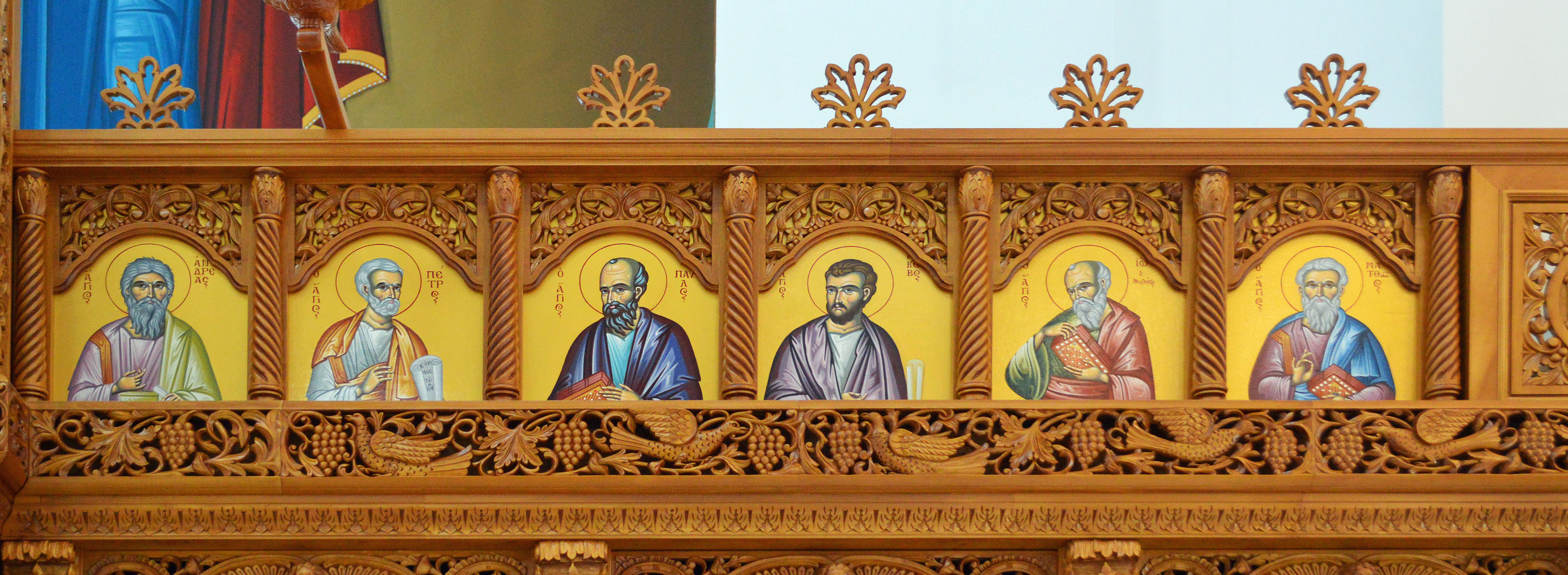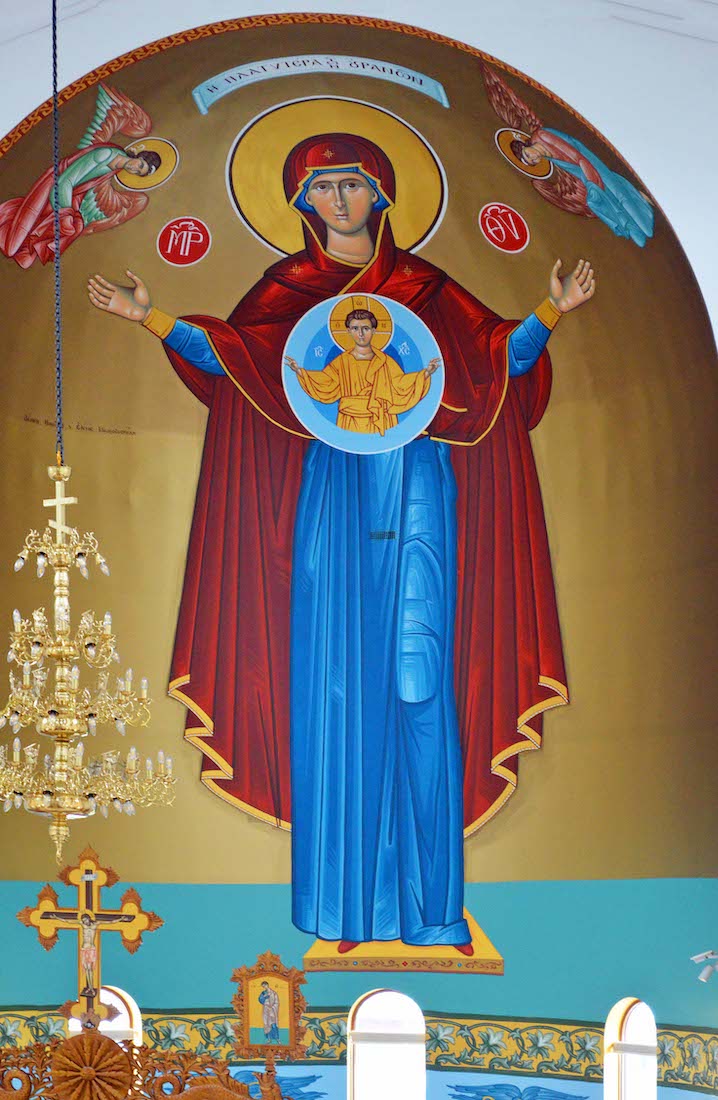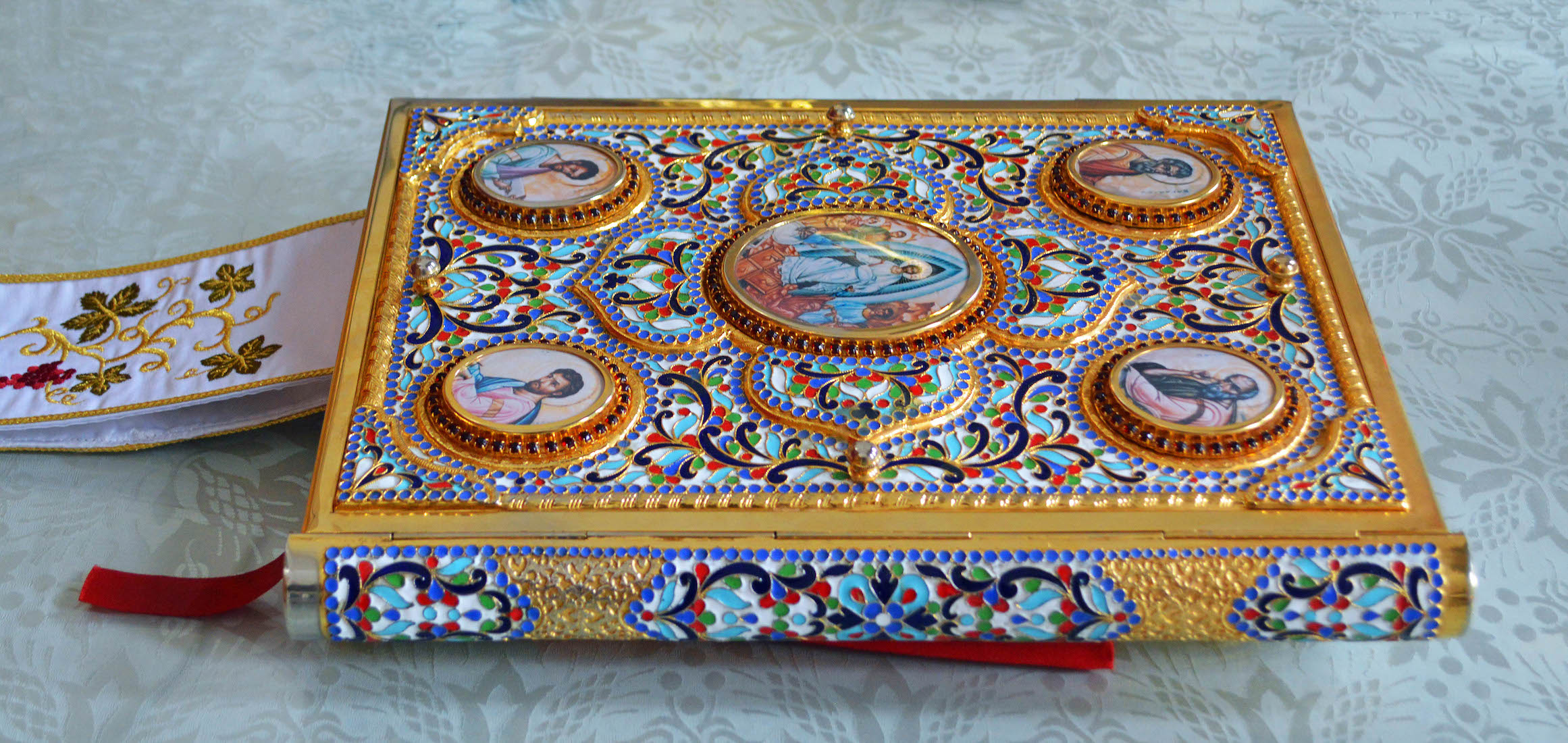42. SOUTH WALL PAINTINGS
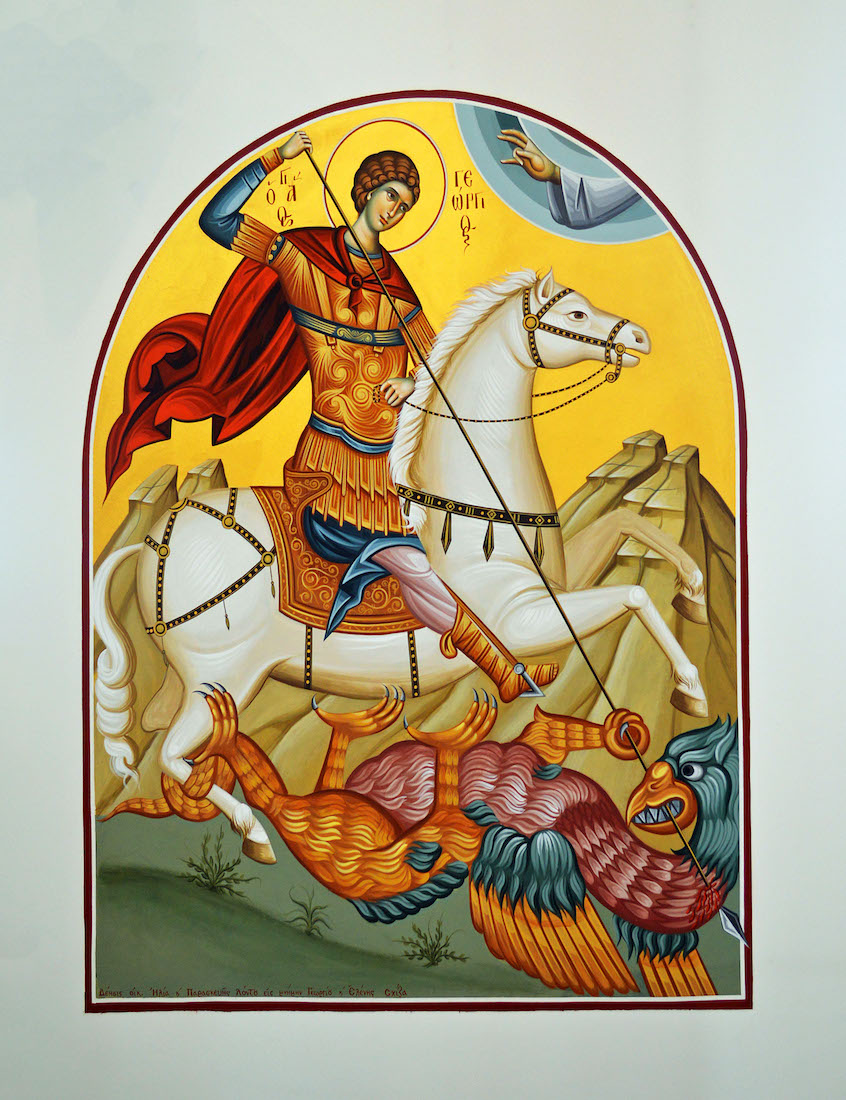

The left icon depicts Saint George slaying the dragon. Saint George (died 303), also George of Lydda, was a Christian who is venerated as a saint in Christianity. Saint George was a soldier of Cappadocian Greek origin and member of the Praetorian Guard for Roman emperor Diocletian, who was sentenced to death for refusing to recant his Christian faith. St George has been immortalised for slaying a dragon. Tradition tells that a fierce dragon was causing panic at the city of Silene, Libya. In order to prevent the dragon from devastating people from the city, the king’s daughter was chosen to be sacrificed. George saved the girl by slaying the dragon with a lance. The king was so grateful that he offered him treasures as a reward, but George refused it and instead he gave these to the poor. The people of the city were so amazed at what they had witnessed that they became Christians and were all baptized. •• The figure at right is St Demetrius (270 – 306AD). During the Middle Ages, he came to be revered as one of the most important Orthodox military saints, often paired with Saint George of Lydda. The very large church in Thessaloniki, the Hagios Demetrios, dates from the mid-5th century and Demetrios is the patron saint of the city. After the growth of his veneration as saint, the city of Thessaloniki suffered repeated attacks and sieges from the Slavic peoples who moved into the Balkans, and Demetrius was credited with many miraculous interventions to defend the city.
43. NAVE SEATING
The nave has ordered rows of seating for the congregation during the celebration of the weekly Divine Liturgy. Each seat has a carved double-headed eagle on the back. The Divine Liturgy is the common action of Orthodox Christians officially gathered to constitute the Orthodox Church. It is the action of the Church assembled by God in order to be together in one community to worship, to pray, to sing, to hear God’s Word, to be instructed in God’s commandments, to offer itself with thanksgiving in Christ to God the Father, and to have the living experience of God’s eternal kingdom through communion with the same Christ who is present in his people by the Holy Spirit.
44. ICON WALL
The icon screen or icon wall (in Greek, iconostasis) separates the nave from the sanctuary (‘altar’). This screen has the Royal Doors at the centre, and six arches on either side, each arch featuring an icon. Above the Royal doors is a depiction of the Last Supper, and a row of twelve small icons extends out from either side. Within the wall there is also an opening side door on either side, second from the end. These doors depict archangels. Icon walls differ from Church to Church, but some things are always the same. The opening side doors always have archangels on them. And the icons alongside the Royal Doors are always from left: Patron Saint(s) / Mother of God // Jesus Christ / John the Baptist.
45. CENTRAL ROYAL DOORS
We shall find that the Royal Doors open inwards to reveal the Altar Table from which the communion is administered. All around the Royal Doors there is wonderful carving.
46. LAST SUPPER
Above the Royal Doors is an icon of the Last Supper, an event which is recorded in the Gospels. It occurred on Passover’s first day, or the Festival of Unleavened Bread. As the disciples reclined and ate dinner with Jesus, he explained that one of the twelve would soon betray him. One by one the disciplines denied that it would be them, including Judas who would be the betrayer. Jesus responded that the person who betrays him will have a terrible fate and that it was Judas. Jesus prayed and thanked God for the meal. He then broke the bread, shared the wine with the disciples, and explained to them how the bread was a symbol of his body, broken for them, and the wine a symbol of his blood which would be poured out for their sins to be forgiven. This is where the Church’s tradition of communion comes from. After the meal, Jesus became like a servant and washed the feet of the disciples.
47. CRUCIFIX
Also above the Royal Doors is a crucifix. The crucifix emphasizes Jesus’ sacrifice—his death by crucifixion, which Christians believe brought about the redemption of humankind.
48. BASE OF ROYAL DOORS
The two small icons in the base panels of the Royal Doors depict the Annunciation in which the Angel Gabriel appears to the Virgin Mary to announce the forthcoming birth of Jesus. The initials at left are A G [Alpha Gamma], and at right MR ThY [Mu Rho Theta Upsilon] – first and last letters in Greek of ‘Mater Theou’ (Mother of God).
49. ICON WALL 1,2
The icon at left shows the Transfiguration. Disciples Peter, James and John have accompanied Jesus up the mountain, when he is transfigured, appearing with Elijah and Moses. •• The icon at right is on the opening door, and shows the Archangel Michael. Michael’s first role is the leader of the Army of God and the leader of heaven's forces in their triumph over the powers of hell. He is viewed as the angelic model for the virtues of the spiritual warrior, with the conflict against evil at times viewed as the battle within.
50. ICON WALL 3,4
At left is a repeat of the icon for King Constantine and Helen which we discussed earlier. •• At right is an icon showing St Luke. St. Luke, also called Saint Luke the Evangelist (1st century CE), in Christian tradition, is the author of the Gospel According to Luke and the Acts of the Apostles. We was a companion of St. Paul the Apostle, and the most literary of the New Testament writers. Information about his life is scanty. Tradition based on references in the Pauline Letters has regarded him as a physician and a Gentile. He probably accompanied Paul on several missionary journeys. He is a patron saint of physicians and artists.
51. ICON WALL 5,6
The left icon here is of the three saints (again)! – Saints Raphael, Nicholas and Irene. •• At right is the Mother of God icon, showing the Virgin Mary holding the Child Jesus, and pointing to Him as Saviour of the world.
52. ICON WALL 7,8
At left we have the Jesus Christ Pantocrator image discussed earlier. •• At right is an image of John the Baptist, interestingly described here as ‘John the Forerunner’. I cannot find this exact expression in Scripture, although there are verses about John preparing the way (Mark 1:1-4).
53. ICON WALL 9,10
The icon at left is of St Phanourios. As mentioned before, little is known about this saint, other than the images of his martyrdom on his icons. • The icon at right depicts St Marina who probably lived in the fifth century. She has an interesting biography, being raised as a Christian, then disguising her gender and entering a monastery.
54. ICON WALL 11,12
The left icon here is of the Archangel Gabriel. In the Abrahamic religions, Gabriel is an archangel who appears in the Hebrew Bible, the New Testament, and the Quran. In the Hebrew Bible, Gabriel appears to the prophet Daniel to explain his visions. The archangel also appears in the Book of Enoch and other ancient Jewish writings. This panel is the opening door on the South side. • At right is a depiction of St Stylianos from Paphlagonia (in Turkey) who lived in the latter 6th century and early 7th century. He loved the Lord Jesus Christ with his whole heart and lived in strict asceticism. When he fell asleep in the Lord, his face shone like the sun and an angel appeared to take his soul to Glory. His prayers have worked many miracles, both during his earthly life and since. He is of special help to children who are ill and to childless couples. He is known as a protector of orphans.
55. TOP OF NORTH SCREEN
A strip of small icons can be seen running acros the top of the icon wall. Those on the left show events in the life of Christ and the early Church. So in the first strip from left we see: Pentecost, the Ascension, Jesus and Doubting Thomas, the Washing of Jesus’ Feet, the Resurrection, and the Crucifixion. In the second strip: Palm Sunday, the Transfiguration, Baptism, Presentation in the Temple, Nativity, the Annunciation. These events are celebrated by Feasts during the Church year.
56. TOP OF SOUTH SCREEN
The top strip on the South side of the icon wall shows the disciples and key figures in the early Church. As before, from left we see: Andrew, Peter, Paul, James, John, Matthew; and then below: Philip, Bartholomew, Judah, Thomas, Simon, Matthias.
57. SCREEN DOVE
A dove can be seen just to the right of the Royal Doors. The dove is seen many times in Scripture to communicate God’s long-reaching presence, security, and the promise of guaranteed hope. The dove in the story of Noah as a well known example. The dove is also one of the forms which the Holy Spirit takes when He manifests in a more physical way upon the earth.
58. VIRGIN MARY
We are about to investigate the sanctuary, but before we leave the nave we stop to look at the rather over-powering 'Mother of God’ image rising above the icon wall. Here are two views from slightly different stand-points. Because the image is painted in the half-domed apse, the figure is actually looking down upon the congregation – very clever. The top text speaks of an ‘Offering of Heaven’. The priest now takes me through to the sanctuary: a privilege which I appreciate.
59. ALTAR TABLE
At the centre of the sanctuary is the altar table, and we investigate some of the items on it. I am allowed to walk anywhere within the sanctuary, except on the mat between the altar table and the Royal Doors. This is regarded as ‘holy ground’, just for the use of the priest. I conclude from this and the placing of the microphones, that the communion is celebrated by the priest with his back to the congregation. This is different from modern Roman Catholic practice in which the celebrating priest faces the congregation.
60. ALTAR TABLE HOLY BOOK
I am intrigued by this beautiful object on the altar table. It is the Book of the Gospels. There is an image of Christ at the centre, and images of the Four Evangelists in the corners. Notice the hinge along the top of the spine. A thing of beauty ... .


